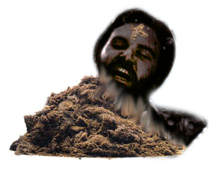February 26, 2003 The Passion Of Jesus Christ book by John Piper.
Loved it so much I am ordering several copies to pass out to friends. Click here to read more about it. What a jewel. I anticipate Piper's foresight led him to anticipate that the media and cultural event cried out for fleshing out of what the movie painted with a broad brush. The movie does not really attempt to tackle the reasons and purposes of the Passion, just it's visceral physical realities, so this book will delight and awe you with the unseen realities of the wisdom of the Godhead in Jesus's work of redemption finished at the cross. Here is a recently posted review at Amazon.com. As of Ash Wednesday, 712,000 copies have been distributed, which is encouraging since it doesn't ship from Amazon and CBD until March. You can download and read about 20 pages for free here.
The Boston Globe posted a cinematic Jesus review recently.
Thanks to Larry for the heads up on this one
As if on cue, Lovingway United Pentecostal Church in Denver posted a sign on its marquee yesterday saying, "Jews Killed the Lord Jesus." It was quickly denounced by the Colorado Council of Churches and the local Anti-Defamation League, and partly dismantled by a passer-by. But the church's pastor said in a telephone interview that the sign was having the effect he intended. "It is getting people to go back and look at their Bibles," said the Rev. Maurice Gordon, whose church is affiliated with the United Pentecostal Church International in Hazelwood, Mo. "It's there to show what the real debate is about. Actually all of us are guilty in some way if we reject Christ." The church removed the sign last night.
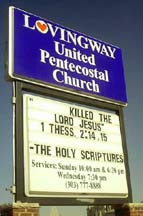 |
Larry says- "..., I wonder if this isn't a lead-in to their sermon next week: "The Jews killed Jesus -- and so did all of us." Still, a little misguided and inflammatory, if so." Here's a bloglink to another story. The picture at left shows the result of a passerby's edit job... UPDATE- Lovingway has issued an email apology to offended parties that have contacted them and removed the sign. |
A woman dies during The Passion crucifixion scene from a heart attack.
The Passion of the Christ Commentary
| At the outset let me warn you that there are movie spoilers included here. Also that this reflects my role as a cultural commentator, not a movie reviewer, who would necessarily attempt to take the movie only for what it is. | 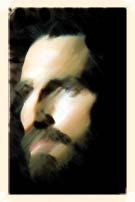 |
From Roger
Ebert’s review
"For we altar boys, this (being an altar boy) was not necessarily
a deep spiritual experience. Christ suffered, Christ died, Christ rose
again, we were redeemed, and let's hope we can get home in time to watch
the Illinois basketball game on TV. What Gibson has provided for me, for
the first time in my life, is a visceral idea of what the Passion consisted
of. That his film is superficial in terms of the surrounding message --
that we get only a few passing references to the teachings of Jesus --
is, I suppose, not the point. This is not a sermon or a homily, but a
visualization of the central event in the Christian religion. Take it
or leave it."
And now for a word from our sponsor: me.
Well, after the big media build up, and hours of news
magazine coverage, I feel like a potential juror who has no way of being
objective. But I will try to separate myself from my preconceived notions.
I was able to see the real deal last night. I came away rewarded with
a vision of horrible beauty and mixed emotions. Upon reflection I also
have a teeming dissatisfaction with elements of the film. But one must
realize this is one subjective vision and interpretation. It does not
adhere to the reading of the texts they purport to derive from.
The first thing I perceived upon arrival at the theater may have constituted
a divine appointment. A young twenty something man walked in the packed
theater and exclaimed, “Jesus _____ Christ!!!” That made me
realize that the world has not changed that much in twenty centuries-
I said a prayer for the whole crowd, wherever they were coming from and
whatever they came for.
Gibson portrays evil in ways that are human to the extreme while giving
us a view of the reality of the supernatural elements of evil throughout
the film. The film is an artistic triumph, and art is not life. Having
been the caretaker of a major counter reformation collection of art for
seven years, I got the sense that I was reentering a gallery of those
paintings.
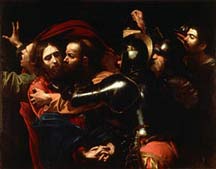 |
Much has been made of Gibson’s fascination with Caravaggio, but the most important contribution is not imagery but motifs that focus on the physical suffering and torment of Christ. The dark and enhanced realism of that portion of the history of western art from Carravaggio to Velasquez shines through mightily. |
The film owes much to Gibson’s artistic license
and he has a right to exercise this. the movie does not attempt to answer
the big so what questions the viewers
will be left with.
The pathos of the psychological torment the Christ endured gets an comparatively
superfluous treatment here. This is one of the things I anticipated and
feared would be true. While the Gethsemane scene held the powerful imagery
of Genesis 3:16-17 being fulfilled (this actually happened in space and
time at the "It is Finished" point") when Jesus crushes
the serpent’s head, the agony of the garden was actually underplayed,
in my opinion. This Jesus is depicted as afraid and anguished but I really
cannot say this was convincingly portrayed when the scriptures attest
that Jesus sweat drops of blood.
| This leads me to the “big picture” problem I have with the film. In the scriptures, the passion has a context. The need for the atonement is clear. While it is focal point of the gospel, a climactic hinge of history, the context the Bible provides gives the passion meaning and purpose. In any film that focuses on the event itself it is perhaps too much to ask that this context be preserved. Or perhaps it is the Catholic view of the cross which reverses the context- that all history finds its meaning and context in the passion?? I'm wondering if this movie attests to that view -I think this may be the case. | 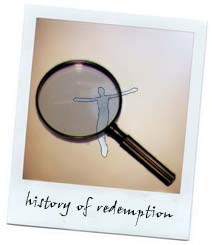 |
The scriptural attitude is that all of history points
to the Gospel- the death, burial and RESURRECTION of Christ. In the movie,
bits and pieces of the life of Christ are interspersed with the physical
torment. We are left with little attention given to the obscenity of what
was happening in the unseen supernatural realities of Psalm 22.
By ending the film with a 12 second, understated and unimpressive resurrection,
we lost even more context of the effect on the followers of Christ. The
road to Emmaus explained a lot to them and we miss out on that as well.
So in the end, I think the 12 hours of the passion are taken out of context-
and beyond this, the passion becomes the context, and a text without a
context remains a pretext, no matter how powerfully it is depicted. That
was the case with counter reformation art and I contend that it is the
case with this film.
Yes, the cross is CENTRAL to the faith but without the balance of the
entire gospel message and the nature of sin, it leaves little ramification
for a viewer 20 centuries removed. Gibson has stated that the point is
that we are all culpable for the death of Christ. It is precisely here
that the movie fails to address the case as if it should be obvious by
osmosis.
Here are some powerful images that I will retain:
The decisive power of the crushing of the serpent’s head a la Genesis
3:16-17.
The Lord of the Flies attendant to the donkey carcass that speaks of the
loss of hope of triumph attendant to Jesus' entry into Jerusalem attends
Judas’ suicide. BTW, the synoptic portrayal of this is not depicted
here.
The overgrown baby demon Satan carries is a bizarre depiction of Satan’s
relationship to his demons.
Question: If you take all the blood that was shed in the movie could one
human body hold it all?
I pondered how much of Christ’s blood was left on the earth to mingle
with the elements.
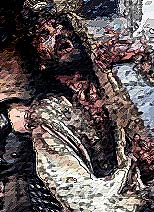 |
Christ’s heroic embracing of the cross.I literally gasped as Jesus says to Mary, "Mother, behold how I make all things new." There is deep theological water there in understanding how Christ sanctified evil to make it the way of our salvation. |
The revealing of the unleavened bread cuts away to
the disrobing of Christ’s body.
Now for the Disconnects
The Jewish context of the crucifixion and the typological fulfillment of so much of the Jewish sacrificial schema is reduced to Mary’s query- “Why is this night like no other” (first line of the Seder) and the scene of the rending of the temple veil. This is an area of rich potential that constitutes an opportunity for purpose of the cross and the need for the atonement to be explored. |
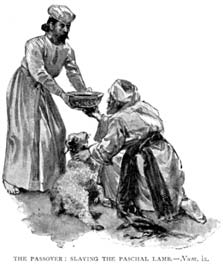 |
Other interpretive disconnects for me:
So much from the gospel accounts was left out- especially Jesus own words.
Gibson seems to favor John’s account but I have not analyzed this
thoroughly.
Gibson opts to go with medieval depictions of the location of the nails
in Christ’s hands, which flies in the face of modern scholarship.
He may be right.
Pontius Pilate is shown as a philosophizing and introspective political
pawn not the historically cruel procurator.
What did you see? At one point it looked to me like Christ’s upper
teeth had been knocked out. On the cross he has all his choppers.
The picture of Satan the Bible paints as an angel of light does not shine
through here. Perhaps that is owing to the fact that only Jesus perceives
his presence.
Recall that this represents a traditional Catholic viewpoint.
Much has been made of the films adherence to the integrity of scripture.
For one who adheres to the concept of sola scriptura, this film was deeply
dissatisfying, as the film’s adherence to scripture is only selectively
true. In a culture of biblical illiteracy, I think the point is important,
if only for the fact that the Pope purportedly stated about the film that
“it is as it was”. One must realize that this is a thoroughly
“Catholic” traditional depiction with lore and legend mixed
with scriptural evidences.
Peter is shown as an undaunted warrior who only falters after he is rebuked
by Christ. The Bible only states he cut off Malchus’ ear- here his
battle with the guards gets more air time than the resurrection. Also,
Malchus is depicted as an armed temple guard, not the High Priest’s
slave.
The flow of the film seems to be guided not by the Biblical narrative
but rather by the stations of the cross.
We see Veronica offering her veil and the camera lingering on it twice.
Mary and Mary Magdalene cleaning up the blood after the scourging.This
is from Sister Anne Emmerich's visions of the early 19th century that
purported to fill in the gaps in the gospels.
The siblings of Christ are nowhere present. This accords with the Catholic
dogma that Mary was a perpetual virgin and had no other children.
Mary’s desire to die with Christ may owe itself to ideas of a her
being co redemptrix.
Other bits of info and misinformation
Mary Magdalene was erroneously depicted as the woman taken in adultery,
which the scriptures do not attest to.
One gets the sense that Christ would never have made it up the hill without
the coaxing of Simon of Cyrene.
Here is a link to the CT weblog which
has many links to reviews from lots of perspectives.
http://www.christianitytoday.com/movies/reviews/passionofthechrist.html
For the resurrection focus the film stops short of, see
http://www.lifeway.com/passion/bts_moviereviews.asp
Note that this review has the erroneous attribution to Paul Harvey’s review. So much for trustworthiness in journalism at Lifeway.
On a lighter note- Camels are Beautiful Too. from News of the Weird- see Feb 22 entry.
| The first international camel beauty pageant was held in November in the Alxa League area of the Inner Mongolia Autonomous region of China, according to an Associated Press dispatch, |
featuring nearly 100 dressed-up camels judged (by veteran herders) for the shine of their hair and the uprightness of their humps. ( [Longview (Tex.) News-Journal-AP, 11-15-03] |
February 25, 2004- What is Ash Wednesday?
Ash Wednesday is a day of symbolic meaning and thus
it is well that all Christians, catholic or not, meditate upon the symbolic
meanings involved. First, it occurs forty days before Good Friday so it
marks the beginning of Lent. It’s called Ash Wednesday because on
that day some Christians have their foreheads marked with ashes in the
shape of a cross. In the Bible a mark on the forehead is a symbol of a
person's ownership. By having their foreheads marked with the sign of
a cross, this symbolizes that the person belongs to Jesus Christ, who
died on a Cross. For the 40 days leading up to Good Friday, Christians
traditionally have set the time aside for prayer, fasting and spiritual
reflection.
The sign of the cross is in imitation of the spiritual mark or seal that
is put on a Christian in baptism, when he is delivered from slavery to
sin and the devil and made a slave of righteousness and Christ (Rom. 6:3-18).
Ashes are a biblical symbol of mourning and penance and of mortality.
In Bible times the custom was to fast, wear sackcloth, sit in dust and
ashes, and put dust and ashes on one's head. In our culture, we no longer
normally wear sackcloth or sit in dust and ashes, but the customs of practice
of fasting and putting ashes on one's forehead as a sign of mourning and
penance have survived to this day in some circles. While we should be
repentant of our sin, it is a best practice to heep a short account of
that forgiven sin and rest in the forgiveness and resurrection life of
the redeemed that the finished work of Christ has wrought.
|
|
Remember the ritual and the sign is only symbolic of a deeper spiritual meaning- it is not required and it is not efficacious in any way. The signs can be a help in focussing our attentions in the proper manner. |
February 24, 2003 Movie comments- Welcome to Mooseport
Why did I see this movie?
Oh yeah I was looking for some light mindless fun with my wife and and friends. Guess I shouldn't carp about it then? There's really nothing much worth talking about so I will just post a couple of comments. I kept waiting for the funny part to arrive. Instead what we got from Ray Romano was a whiny, bumbling character we were supposed to empathize with. He cannot commit to the jewel of a girlfriend he has been dating for six years and is basically about as shallow as it gets. He talks about the integrity of a manıs word but he shows that he hasnıt had to live it out in his relationship because he will nevertake the vow...
|
The movie winks at premarital sex and makes light of materialistic men. A supporting female character proposes that power takes ten years off a man and being in shape another ten, but character is completely ignored as a consideration. Whether Romano is either playing himself or his character on TV is uncertain, but the result is dull, dull, dull, and deviod of laughs. So two out of three ainıt bad- it is light and mindless but the fun never really gets going. I wonder what posessed Gene Hackman to lend his considerable talent to this flick? I did enjoy being out with friends though. :-) |
 |
Purpose Driven Passion
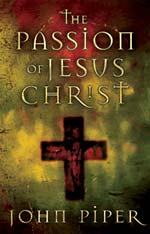 |
Why did Christ suffer and die? The central issue of Jesusı death is not the cause, but the meaningGodıs meaning. That is what this book is about. John Piper has gathered from the New Testament fifty reasons. Not fifty causes, but fifty purposesin answer to the most important question that each of us must face: What did God achieve for sinners like us in sending his Son to die? This is must read for Christians who want to take the conversation beyond the movie at the water fountain at work or elsewhere. Piper packs deep theology into easily digested chucks that do not lose the awe and mystey of the cross. Get it from the website for less than from Amazon or CBD. I read halfway through it last night and will finishe it tonight, and will return to meditate on each two page entry through Easter. I am still getting images running through my mind as I write this... |
I cannot claim to understand The
myst'ry of the cross
But I believe Christ bore my debt Of sin and paid its cost.
For God took pleasure in bruising Him -
The only way to free all men
Who will find new life within His loss!
I'll never know what was in the cup
For Christ's already drank it up
But a share in His glory and His suffering
The empty cup will shape the song I sing!
For the joy of the taking of the cup-
Is the joy of the giving of your life
And the pain of the taking of the cup
Is the pain of the giving of your life!
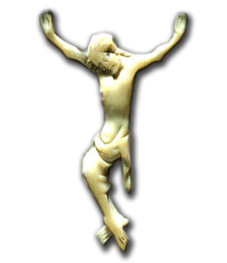 |
I cannot claim to understand How Christ became
a curse To substitute His life for mine- to suffer death and worse He entered through the gates of Hell What happened then no tongue may tell Then He arose to life again- death's bonds to burst I'll never know what was in that cup For Christ has already drank it up But I share in His glory and His suffering The empty cup will shape the song I sing! For the joy of the taking of the cup- Is the joy of the giving of your all And the tragedy is of those who never sup Who will never answer to His call! |
8-19-91
Anthony Foster
Copyright 1991 Anthony Foster
Here's the lastest from my alma mater and school board...
Pastors' Campus Ban Called Discrimination
Charisma
News Service and the permalink at the Courier
Journal.
School officials in a Kentucky community have decided not to reconsider
a policy prohibiting ministers from having lunch with students. Despite
an overflow crowd of 500 people who overwhelmingly expressed support for
the ministerial visits, the Bullitt County school board members refused
to change the policy at their meeting last week. Ronald Shaver, senior
pastor at Little Flock Baptist Church, told the board that he and other
pastors only want to help mentor students with whom they're already
affiliated. The ministers have said that when they eat with students,
they don't discuss religion, pray or evangelize. Little Flock pastors
said the visits had gone on for 17 years. Francis Manion, a Kentucky
attorney with the American Center for Law and Justice, urged the board
to protect the rights of ministers. "The Constitution is clear,"
Manion
said. "You may not exclude a minister, a rabbi or anyone else solely
because of their religious status." Church authorities say
Superintendent Michael Eberbaugh's decision to end the luncheon visits
changed a long-standing practice, but school board attorney Eric Farris
said district authorities didn't know about the pastors' visits until
last month.
AF-Have you read the Constitution lately, Eric?
The Passion Premieres tomorow night
I got my tickets for the Passion for tomorrow's opening showing at the local theater. As I anticipate the screening, I am dubious about how evangelicals have embraced this film before seeing it on the basis of the comments of those media ministries who have recommended it. I have come to a point where i wonder how sound that advice is. Man looks on the outside but God looks on the inward parts- and that is where the cosmic obscenity happened at Golgotha. We shall see
| Focusing on the physical blood, as horrible as it was, cannot compare to the agony of the innocent lamb of God having the sin of the world, past, present and future, imputed to him as the sin bearer for the world and of bearing the wrath of the cup poured out on him there. I hope the resurrection- the validation of the sacrifice- will get its due. I have always thought that the catholic rosary has a man still on that cross eternally and perpetually suffering. My Lord is seated at the right hand of the Majesty on high enjoying the joy that was set before him to the Fathers's glory. | 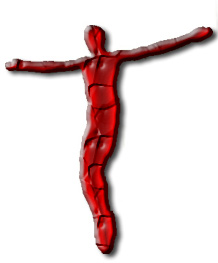 |
What was the cup that Jesus drank? why'd he ask God
to take it away
What kind of poison did it hold? what price did He have to pay?
He drank it all and He felt it all- he bore for us all of it's blame
Yet man might never understand just what the cup contained!
If you could feel the hell of every war that was ever waged
The starkness and the sting of death that causes the heathen to rage
If you felt the despair of every slave straining against His chains
Throughout all of history multiplied you might know what the cup contained!
If you could know the horror of every innocent that's ever died
Or the damage of every abomination that'sever been tried
If you knew the heart of the adulterers- their guilt and all of their
shame
Perhaps you could start to comprehend just what the cup contained!
If you could know the deceit of every thief and every murderer's crime
Or the lonliness of separation from one you'd loved for all time
If you felt the hurt of all the world could you understand so much pain?
Yet Jesus willingly drank the cup though he knew what the cup contained!
The defilement of every woman who has given her body away
The disgrace of every traitor and the hurt of the one betrayed
Yet he drank it all and he felt it all- from eternity it was ordained
God's wrath toward the iniquity of our race was in the cup contained!
He drank it all and He felt it all- he bore for us all of it's blame
Yet man will fail to comprehend just what the cup contained!
7-8-87
Anthony Foster
Copyright 1987 Anthony Foster

